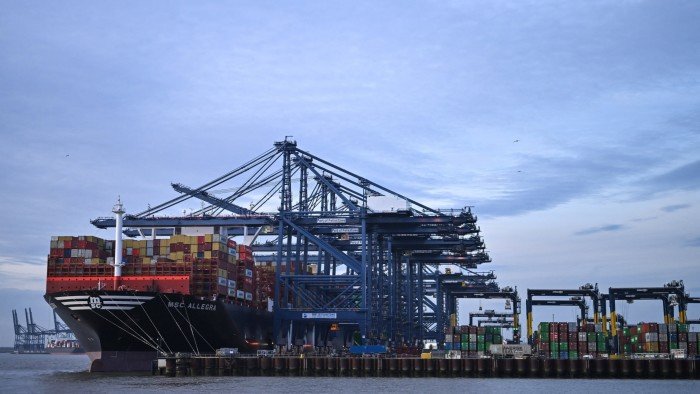Unlock the Editor’s Digest for free
Roula Khalaf, Editor of the FT, selects her favourite stories in this weekly newsletter.
There’s a new index in town. If you read a lot of sell-side research or central bank publications, you might have seen this alarming chart recently:

This was the ECB, writing about “risks to euro area financial stability from trade tensions”. The OECD, back in March, presented it alongside a close cousin in their presentation on “Steering through uncertainty”:

It is the “Trade Policy Uncertainty Index”, originally formulated by Dario Caldara, Matteo Iacoviello, Patrick Molligo, Andrea Prestipino and Andrea Raffo, and published in 2019.
It’s pretty obvious what function it performs — it is just what you need when the format of the document demands a chart and some numerical evidence, while what you want to put is a guttural scream of fear. There is an etiquette to these things. If you want to criticise crazy policies of emerging market countries you can just go ahead and say that they’re crazy and damaging, but developed markets need tact. It’s not the done thing to start talking about an US “Moron Risk Premium”.
Accepting that “Uncertainty” is a euphemism, though, how is the thing actually calculated? The authors explained it in a note for the Fed:
“We run automated text searches of the electronic archives of seven newspapers: Boston Globe, Chicago Tribune, Guardian, Los Angeles Times, New York Times, Wall Street Journal, and Washington Post. We select articles that discuss TPU by searching for terms related to uncertainty — such as risk, threat, uncertainty, and others — that appear in the same article as a term related to trade policy — such as tariff, import duty, import barrier, and anti-dumping. Our news-based measure of TPU is the monthly share of articles discussing trade policy uncertainty, rescaled to equal 100 for an article share of 1 percent”
So in the first chart above, the reading at the right hand edge indicates that for the last 30 days, an average of just under 12 per cent of the news articles referred to trade policy uncertainty. Looking at the underlying data gives even more frightening perspective — on April 10 (the day after the announcement of the “pause” on reciprocal tariffs), nearly a fifth of all news articles surveyed were about trade policy uncertainty.
As you can see from the rest of the chart, this is unusual. A more typical news environment is between 1 and 2 per cent trade uncertainty. Even in the last big spike in 2018-19, covering the combined efforts of the first Trump administration and the Brexit negotiations, it only reached 4 or 5 per cent. Is this really a measure of how bad things have become?
Well, is it really a measure of anything? For one thing, the index measures what the newspapers are talking about more than what they are saying. As can be seen above, they try to filter for context, but it looks like “risks of tariffs are reduced” would score the same as “threats of tariffs increase”. And for another, the ratio has a numerator and a denominator; if there is another big news event going on like a war or pandemic, TPU measured in this way is going to decline simply because it’s a lower proportion of the total output.
But of course, the major glaring weakness in the construction of the index is that the Financial Times is not in it. It might be argued that this is because the authors wanted to specifically measure American trade policy uncertainty, but if so, what’s the Guardian doing in there? With the greatest of respect to all the major international banks and institutions that have made use of this analysis, no FT, no index.

